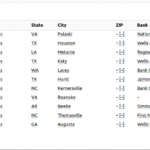Is Your Business Ready for Virtual Credit Cards?
— April 17, 2017

How would you evaluate your current vendor payments workflow? If your business is still spending time printing and mailing your checks to pay your bills, then you’re missing out. The Bank of America has previously estimated that the total cost per check can rise as high as $ 4 to $ 20 each. Not only is in-house cheque printing time consuming, but it’s costly when you add in the price of postage, the materials, and all those hours lost standing by the printer.
There are already plenty of alternatives that exist today for your business-to-business (B2B) payments, including EFT/ACH, wire transfers, and credit cards. But as businesses look more towards digitizing their entire accounts payable process, from procure to pay, there’s another emerging payment technology that’s been gaining considerable attention.
Virtual credit cards remove the security risks associated with physical credit cards. Instead of a permanent card number, and the associated plastic swipe, virtual credit card numbers are single-use, which become invalid after a transaction is complete. The 16-digit number is randomly generated, and the expiration date can be custom set. To the online merchant, a VCC looks the same as any other credit card, but the vendor will never see the actual credit card number.
Not only do virtual credit cards provide unique security protections, to help you combat against payment fraud, but the cash rebate programs available through virtual credit card providers will earn your business money just by paying the bills.
While the technology behind digital cards has existed for at least the last decade, we’re now reaching a critical mass in adoption. Virtual credit cards complete the AP automation cycle, bringing the whole process into the cloud and in real-time, but as with any new technology, not all businesses are ready to jump on board as early adopters. Download the Virtual Credit Card Checklist now to see where you stand.
This article was originally published on the Beanworks blog.
Business & Finance Articles on Business 2 Community
(55)













